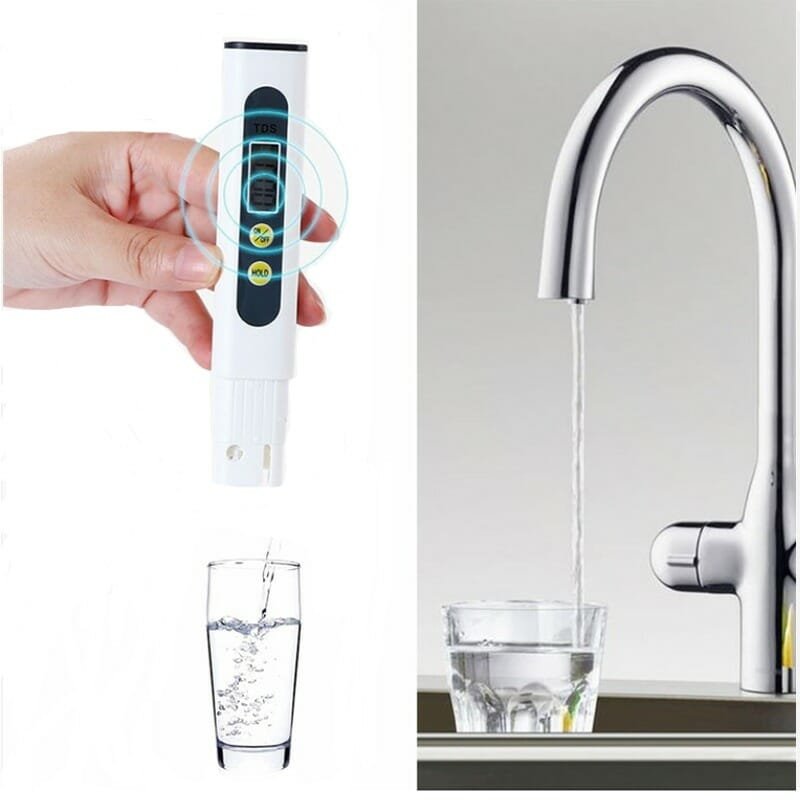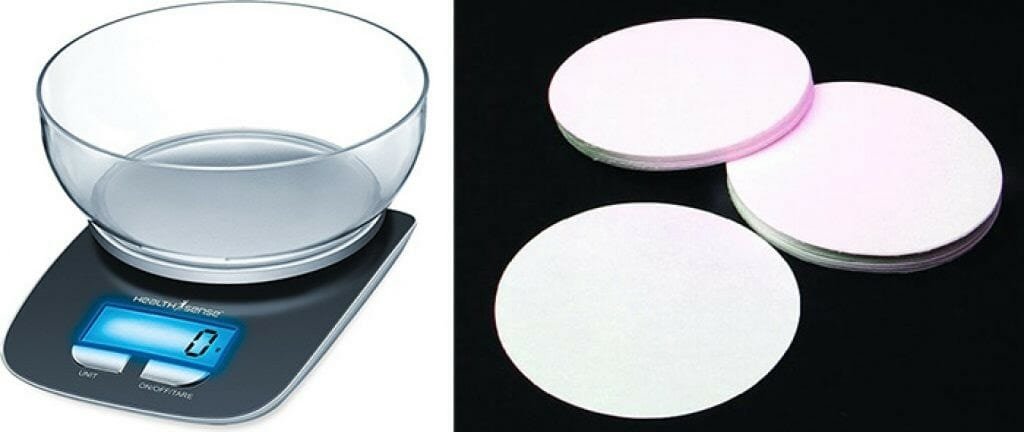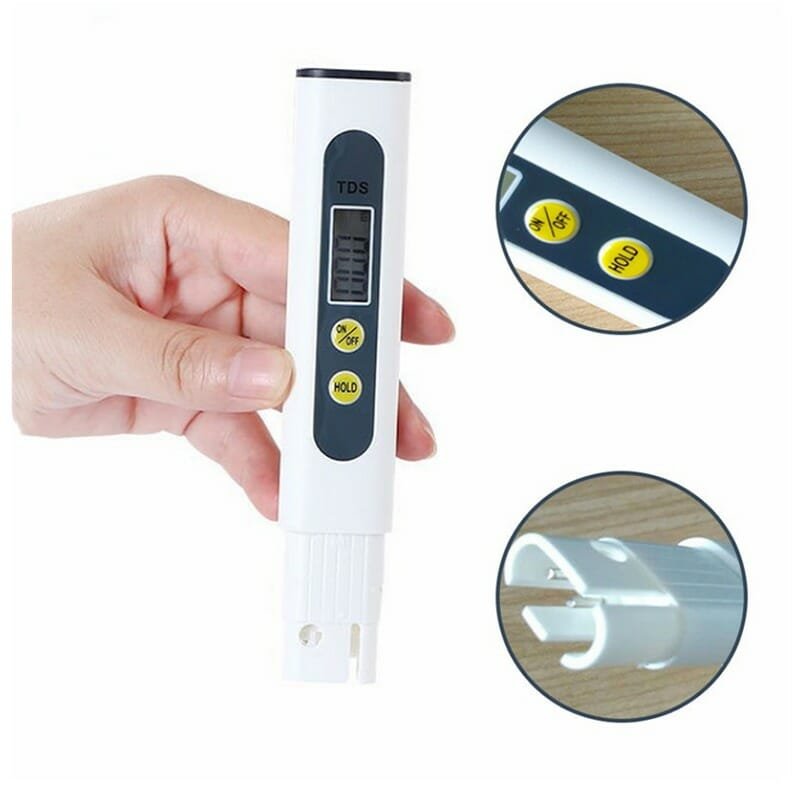

You must have studied that water is flat, odorless, and has a clear appearance. While these characteristics are true for “pure water”, there are certain substances (or salts) that can change the above characteristics of water. These include both organic and inorganic matters which fall under the same roof called Total Dissolved Salts (TDS). The measurement of these salts in water is an effective way to show the overall quality of your water.
Continue reading this article and get a clear understanding of these total dissolved salts, how to measure them, and reduce their concentration to elevate the quality of your water.
What Is TDS In Water ?
TDS is the measure of the various organic and inorganic substances like metals, minerals, ions, or salts in a water system. These substances can easily enter the water systems from various sources like piping, water springs, run-off from roads or mountains, pesticides, fertilizers, and much more.
Since water is a universal solvent, it can easily dissolve these soluble substances or salts.
Types Of Common TDS In Water TDS meter
The common total dissolved salts or solids in water include:
Calcium,
Chloride,
Magnesium,
Potassium,
Zinc,
Aluminum,
Copper,
Lead,
Arsenic,
Iron,
Chlorine,
Sodium,
Fluoride,
Bicarbonates,
Sulfates, etc.

With TDS in water associated with several health risks (I’ll get to this later), it’s necessary to pay attention to the concentration of these substances in your water. For this, there are multiple ways to measure the concentration of TDS in water as discussed below.
Method 1: Using a TDS meter which is the best and most convenient tool you’d find.
To measure TDS in water using a digital TDS meter, follow the following steps.
- Remove the protective cap from the bottom of the TDS meter.
- Turn ON the TDS meter through the ON/OFF switch on the center panel of the meter.
- If there are markings on the TDS meter, immerse the meter up to the greatest marking for more accurate
- readings. If there are no markings, immerse the meter to at least 2-inches.
- This may lead to the formation of bubbles. To dislodge these bubbles, gently stir the meter.
- Avoid taking the reading at once. Wait for at least 10 seconds for the reading to stabilize.
- On some models, there is an option HOLD which when pressed, will freeze the reading on the display panel. If it’s not present in your TDS meter, quickly notice the stabilized reading to avoid alternations in the same.
- When you’re done with the readings, wipe off the meter and replace the protective cap.
Precautionary tips:
- You should not immerse the TDS meter beyond 2-inches as some meters are non-watertight.
- Do not immerse the meter in too hot or cold water.
Note that a TDS meter can only calculate the concentration of dissolved salts and not the type of salt.
Method 2: Besides a TDS meter, there is another way to measure the level of TDS in water and that’s using a filter paper and weighing scale.

If you don’t have a TDS meter at home, you can still measure the amount of total dissolved salts in the water using common household objects like:
- A sterilized beaker,
- Water sample (some water for cleaning the evaporating dish),
- Filter paper,
- An evaporating dish is shown below.
- A stirrer,
- A dropper or pipette, and
- A weighing scale.
Procedure:
-
- Clean the evaporating dish with regular or distilled water. This is to ensure that the dish is free from any particle(s) that could interfere with the readings. Weigh this dish and label its weight as “A”.
- Transfer the water sample to the sterilized beaker and stir it energetically with the stirrer. This step will ensure that the particulate matter is evenly distributed throughout the water sample.
- Next, pipette out about 50ml of the water sample while continuously stirring it with the stirrer.
- Take the filter paper and pass the above water quantity through it thrice. Every time, some sediments will be collected in the filter paper.
- If it’s so, transfer these sediments to the evaporating dish and wait till they completely dry up.
Once the filtrates/sediments have dried up, again weigh the dish (with filtrate) on the weighing scale. Label this weight as “B”.
- Use the TDS formula [(A-B)*1000]/mL.
- Let’s recall.
- A – Weight of the empty evaporating dish.
- B – Weight of the evaporating dish + filtrate.
- mL – 50mL (our sample size)
Put the above values in the formula and the result will be in mg/L.
How Much Total Dissolved Salts Are Good?
The following illustration depicts how much concentration of TDS (in ppm) is good.

Why Should You Measure TDS In Water?
As I said above, the total dissolved salts affect the various aspects of your water like its odor, taste, and appearance. Due to this, that water may or may not be accordant for applications like drinking, cleaning, cooking, etc. Further, by knowing how much concentration of these dissolved substances is present in your water, you can decide which filtration method to use.
Let’s understand how these total dissolved salts affect your water and health.
TDS influences the water’s taste and smell.
If the water has huge quantities of dissolved salts, it will taste bitter and smell filthy. The higher the concentration of TDS, the bitter it will taste and the fouler it will smell.
It affects your health.
Out of all the types of dissolved solids from the above list, lead and copper are the two most harmful substances for your health. This is because while exposure to lead results in damage to the brain & nervous system, copper leads to nausea.
It affects the life of your filter system.
Though filter systems are made to filter out the harmful substances from water, their higher concentrations may even affect or damage the filters inside. This is a possibility if you neglect the maintenance of your filter system.
Total dissolved salts affect the plumbing system.
If the water contains high concentrations of calcium and magnesium, this water can damage your plumbing system and appliances. This is because calcium and magnesium will collect inside the plumbing lines and initiate harmful scale buildup. As a result, you will have to undertake expensive pipe replacements.
It affects the taste of the food.
Though cooking in water with a TDS concentration under 1000 ppm won’t affect your health, it will surely affect the taste of the food. For example, if the water has a high amount of chlorine, anything you’ll boil in it will absorb the unpleasant taste of chlorine from the water.
Besides, there are several other ways in which the level of TDS in water affects your health.
How To Reduce TDS In Water?
Though low TDS water is the most ideal water, still certain TDS concentration applies to certain industrial applications. But, if the TDS measurements in water exceed 500 ppm, you should abstain from using that water for any purpose without lowering its TDS concentration. For this, the following are the top three methods you can use.
Reverse Osmosis (RO)
Reverse osmosis is the best and most comprehensive way to remove contaminants from the water system. This involves passing the polluted water through a semipermeable membrane. The membrane blocks all the contaminants of the water including TDS using its small pores and allows clean water to flow through to the other side.
How to measure TDS in water through the reverse osmosis system?
You can also measure the TDS in water using your reverse osmosis system. Here, we’ll calculate the % rejection of TDS by the permeable membrane of the system for which the formula is:
Procedure:
- First, we will measure the TDS of the raw feed water using the TDS meter as discussed above.
- Next, do the same for the RO water. Here, take the water sample from your RO.
- Once you’ve all the readings, put them in the above formula.
This method will also determine the performance of your RO system.
Distillation
To understand the distillation of water in a better way, picture how evaporation of water takes place in nature. The process of distillation takes place using distillers that convert water into steam. Since the contaminants dissolved in water like TDS can’t convert into steam, they behind in this process. Upon liquidation, the water you get is contamination-free.
Deionization
You must have heard of deionizers. Right? Their work is to help water ions to replace their charged ions from total dissolved salts. As a result, the water you get is free from ions of the dissolved salts and highly pure.
Which Is The Best TDS Meter?
In the market, you’ll find a plethora of TDS meters with unique feature sets and capabilities. This creates lots of confusion among the buyers and will likely do the same to you. No worries!
I’d recommend this digital TDS meter from Uniglobal Business which is an upgrade to the previous model and below are some of its highlights.
- High Accuracy & Easy to Use: The maximum tolerance is less than +/- 2% and the operation steps are utterly simple.
- Fast Read & Auto-off Function: This meter uses a smart detection chip that reads the digital screen of the Total Dissolved Solids instrument within one second. After 10 minutes of inactivity, the meter will automatically turn off to conserve battery power. This product is auto-calibrated and is ready to use.
- Wide Use: 0-9990 PPM measurement range. It’s an ideal tool for testing drinking water, aquariums, RO/DI systems, hydroponics, pool, etc.
- The large backlight LCD for easy reading.
- An automatic lock function for ease of use.
The final takeaway!
Besides pH and ORP, TDS measurement is another quick way to determine the quality of your water. The higher its concentration, the more hurt it will do than good to your health, appliances, plants, plumbing system, among others. Hence, you’d constantly measure the TDS of your water through a TDS meter and filter out the contaminants using any of the above ways.
